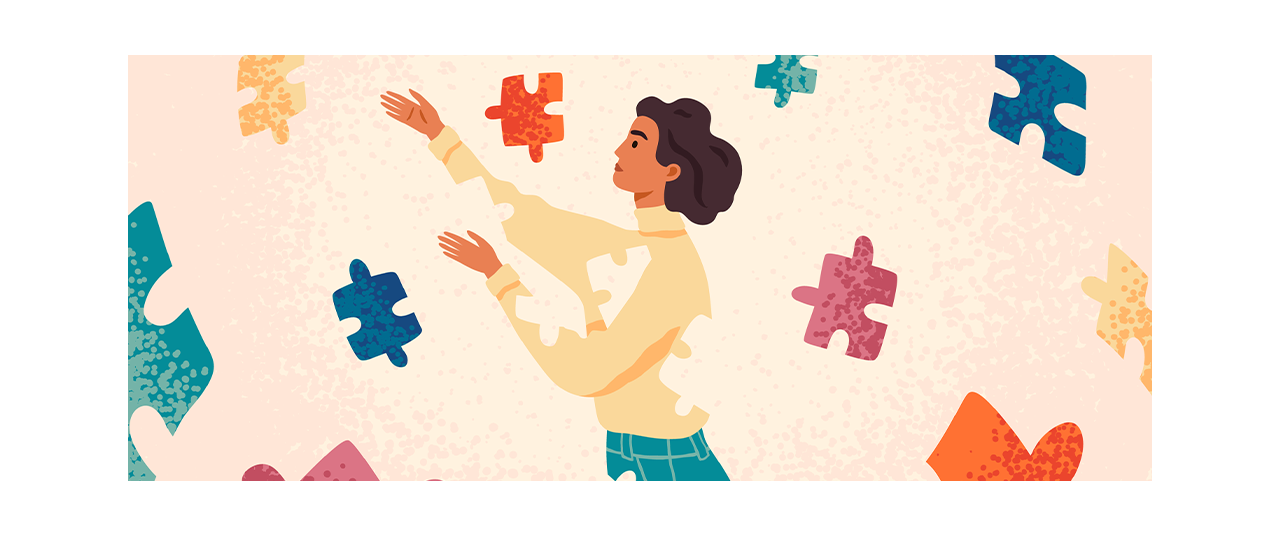
Increasingly, those in the healthcare field and beyond are embracing the fact that mental health is health. Prior to the COVID-19 pandemic, the country was already experiencing a mental health crisis. In fact, the State of Mental Health in America 2021 Report estimated that one in five adults experience some type of mental illness. Now more than ever, healthcare leaders have an opportunity and responsibility to lead with mental health in mind.
To provide equitable and inclusive mental healthcare, it’s crucial leaders understand that a variety of factors can influence the health status of an individual or an entire community. Many social determinants of physical health—including environment, socioeconomic status, access to care, etc.—impact mental health as well. While there are commonalities across demographics, there are also many unique mental health stressors faced by minority communities, including economic disparities, institutional disadvantages and experiences with racism/bigotry. For example, Black and Latino people reported disproportionately higher levels of financial- and work-related concerns, such as paying for rent/mortgage or losing a job, than white people during the pandemic, according to an American Staffing Association survey. And according to Pew Research, nearly one in three (32%) of Asian people fear they will be physically attacked because of who they are, given the recent rise in discrimination and violence against people of Asian and Pacific Islander heritage.
The confluence of all these events have created a mental health syndemic. American anthropologist Merrill Singer, PhD, coined the term syndemic (or synergistic epidemic) to describe when there are co-occurring epidemics which exacerbate the prognosis and burden of disease. For minorities, there are various epidemics that can impact mental health status and well-being. According to an article published in Psychiatric Services in February 2021, “The complex interactions between the [COVID-19] pandemic, structural racism and mental health inequities have led to devastating health, economic and social consequences. The intersection of these three conditions, which meets criteria for a syndemic … presents numerous policy challenges—and opportunities.”
National Minority Mental Health Awareness Month is the perfect time to evaluate how we as healthcare leaders can make mental health more accessible and culturally sensitive for different communities and populations.
Know Your Numbers: Mental Health Epidemiology
In the interest of evidence-based medicine and data-driven decision making, let’s begin with the question: Is the prevalence of mental health disorders different among minority groups?
According to the American Psychiatric Association, most racial/ethnic minority groups overall have similar—or in some cases, fewer—mental disorders than white people. However, the consequences of mental illness in minorities may be long lasting. Research shows reported rates of depression are lower in Black (24.6%) and Latino (19.6%) populations than in white populations (34.7%), but depression among Black and Latino people is likely to be more persistent. And American Indians/Alaskan Natives report higher rates of posttraumatic stress disorder than any other ethic/racial group.
An important caveat noted by the American Psychiatric Association, a “lack of cultural understanding by healthcare providers may contribute to underdiagnosis and/or misdiagnosis of mental illness in people from racially/ethnically diverse populations. Factors that contribute to these kinds of misdiagnoses include language differences between patient and provider, stigma of mental illness among minority groups and cultural presentation of symptoms.”
So while the prevalence of mental health disorders may not differ drastically for minorities, some of that may be due to underdiagnosis. Additionally, People from racial/ethnic minority groups are less likely to receive mental healthcare. Nearly half (48%) of white people have received mental health services, compared to only 31% of Black and Latino people, and 22% of Asian people.
Recommendations for addressing these issues include:
- Identifying the epidemiology of mental health in your area and surrounding communities, being attentive to minority mental health.
- Determining the epidemiology and utilization of mental health services by demographic.
- Ascertaining whether there are statistically significant, clinically significant or significant population health differences in the epidemiological measures and utilization measures.
- Dedicating resources to narrow and close the gaps.
- Celebrating “early wins” while remembering that progress is likely to be a marathon, not a sprint.
Combatting Racial Battle Fatigue
On top of a syndemic that has exacerbated mental health challenges for minorities, dealing with discrimination, prejudice and microaggressions at work and in life is a chronic stressor. This extra mental and emotional burden has been termed racial battle fatigue. Examples of stressors frequently mentioned by minorities of color include not being addressed in the same way as white colleagues and fears of being undervalued and taken advantage of based upon your minority status. Racial battle fatigue can impact an individual regardless of educational status, occupational role or income. Even physicians of color are subject to experiencing racism at work, according to a peer review article in Family Medicine.
Next Steps for Healthcare Leaders
When it comes to the mental health and well-being of our patients, staff and communities, we as leaders must resist engaging in “magical thinking” and “time heals all” idealism. It’s our responsibility to recognize the societal and system barriers faced by minorities and work to cultivate equity for the people whose lives we touch through our healthcare organizations. We must be brave and resist upholding the status quo purely to avoid “upsetting the apple cart” and making some people uncomfortable.
If we recognize that mental health is health and we strive to foster safe, healthy, inclusive and equitable environments, we have to be open to change. The timing may never be perfect, and the resources may always be constrained, so it’s up to leaders to prioritize positive changes. It is truly amazing of how creative, innovative and courageous a single leader and a small group of champions can be when they choose to be. It’s your choice. What do you choose?
William F. “Marty” Martin, PsyD, is the director, diversity administrator and professor of the Health Sector Management MBA Program at DePaul University in Chicago. He is also a licensed clinical psychologist and an ACHE member.
